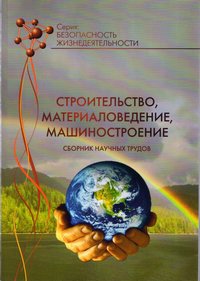Modeling of the process of isolation of particles of dust from air and determination of efficiency rotary dust drawer
DOI:
https://doi.org/10.30838/P.CMM.2415.250918.215.155Keywords:
rotary saw, rotor, blade, inter-blade axial vortex, movement of dust particles, electrohydrodynamic analogy methodAbstract
Purpose. Improving sanitary and hygienic working conditions due to better air purification and reduction of the energy intensity of the process of dedusting air in the cabs of agricultural machines due to the substantiation of the technological and design parameters and operating modes of the high-performance rotary dust separator. Method. The method of electrohydrodynamic analogies (EGDA) allows experimentally, using simulation, to solve various problems of potential air movement. This method involves the creation of a model with a certain electrically conductive material, as a rule, geometrically similar to this part of the air movement. Results. The drawbacks of the existing dust separation means are revealed and their improvements are carried out by improving the rotary dust separator and developing a new shape of the blades with a notch in the middle part, which will increase the efficiency of the rotary dust separator by increasing the separation of dust particles 3 microns in size. Also, using EGDA, trajectories of movement of dust particles in the rotor channels were constructed. By selecting the number of blades and their angle of inclination, the maximum efficiency of the dust separator is determined. The regularities of the process of separation of dust particles in the rotor channels are established and the dependencies for calculating the rotary dust separator are determined. Scientific novelty. On the basis of theoretical studies and studies using electrohydrodynamic analogy (EGDA), the shape of the inter -blade axial vortex (Taylor vortices), which occurs when air flows in the rotor channels and affects the law of distribution of flow velocities, is determined. Developed mathematical relationships to determine the effectiveness of the deposition of dust particles on the rotor blades and remove them in a dust collector, depending on their size, rotor diameter, length and number of blades, rotor speed and dust separator performance. On the basis of theoretical and experimental studies, rational modes of operation of the rotary dust separators in the vent ilation systems of agricultural machinery cabs have been established. Practical meaningfulness. A new form of rotor blades with a notch in the middle part has been proposed, which will increase the efficiency of the rotary dust separator by increasing the separation of dust particles 3 microns in size.
References
Barsukov M.P., Voynalovich O.V., Klitsenko G.G., Barsukov V.Ie., Kirdan V.Ie. Vyrobnycha sanitariia u silskomu hospodarstvi [Industrial sanitation in agriculture]. Kyiv: Osnova, 2011, 287 p. (in Ukrainian).
Mazilin S.D., Gcozdev A.V., Rogovoy V.D. Modelirivanie potokov v rotazionnom pyleotdelitele cictem ventiliatsii kabin selskokhoziaystvennikh mashin [Simulation of flows in a rotary dust separator for agricultural vehicles cabin ventilation systems]. Visnyk Lvivskoho derzhavnoho universitetu: Ahroinzhenerni doslidzhennia [Visnyk of Lviv State Agrarian University: Agroengineering research.]. Lviv, 1999, no 3, pp. 190-194. (in Ukrainian).
Mokhnatko I.M. Eksperymentalni doslidzhennia protypotokovoho rotatsiynogo pyloviddilnyka povitria [Experimental studies of counterflow rotary saw blade air]. Pratsi TDATU – Melitopol, 2009, vol. 9, t.3, pp. 160-164. (in Ukrainian).
Rogovoy V.D., Mazilin S.D. Modelirivanie prozessa separatsii pilevidnikh chastits v rotazionnom pyleotdelitele [Simulation of the separation of dust particles in a rotary dust separator]. Trudi TGATA: Tekhnika v silskokhoziaistvennom proizvodstve [Proceedings of TGATA: Technique in agricultural production]. Melitopol, 2010, vol. 1, no 9, pp, 87 -89.
Shtokman E.A., Shilov V.A., Novgorodskiy T.A., Skorik T.A., Amerkhanov R.A. Ventiliatsiia, kondizionirovanie i ochistka vozdukha na predpriiatiiakh pishchevoy promishlennosti [Ventilation, air conditioning and air purification at food industry enterprises]. Moscow: Izd-vo ASV, 2007, 633 p. (in Russian).
Shtokman E.A. Teplogazosnabzhenie i ventiliatsiia [Heat and ventilation]. Moscow: Izd-vo ASV, 2013, 172 p. (in Russian).
Karel Budinsky Rebierender. Zentrifugalabschcidsr mit Kontinierlicher Stanbableitung.: Staub-Rcinchalt der Zuft, 1970, vol. 30, no 9, pp. 366-370.
Downloads
Published
Issue
Section
License
Редакція Видання категорично засуджує прояви плагіату в статтях та вживає всіх можливих заходів для його недопущення. Плагіат розглядається як форма порушення авторських прав і наукової етики.
При виявлені у статті більш ніж 25% запозиченого тексту без відповідних посилань та використання лапок, стаття кваліфікується як така, що містить плагіат. У цьому випадку стаття більше не розглядається редакцією, а автор отримує перше попередження.
Автори, в статтях яких повторно виявлено плагіат, не зможуть публікуватися в усіх журналах Видавництва ДВНЗ «Придніпровська державна академія будівництва та архітектури».
Автори, які публікуються у цьому журналі, погоджуються з наступними умовами:
- Автори залишають за собою право на авторство своєї роботи та передають журналу право першої публікації цієї роботи на умовах ліцензії Creative Commons Attribution License, котра дозволяє іншим особам вільно розповсюджувати опубліковану роботу з обов'язковим посиланням на авторів оригінальної роботи та першу публікацію роботи у цьому журналі.
- Автори мають право укладати самостійні додаткові угоди щодо неексклюзивного розповсюдження роботи у тому вигляді, в якому вона була опублікована цим журналом (наприклад, розміщувати роботу в електронному сховищі установи або публікувати у складі монографії), за умови збереження посилання на першу публікацію роботи у цьому журналі.
- Політика журналу дозволяє і заохочує розміщення авторами в мережі Інтернет (наприклад, у сховищах установ або на особистих веб-сайтах) рукопису роботи, як до подання цього рукопису до редакції, так і під час його редакційного опрацювання, оскільки це сприяє виникненню продуктивної наукової дискусії та позитивно позначається на оперативності та динаміці цитування опублікованої роботи (див. The Effect of Open Access).

